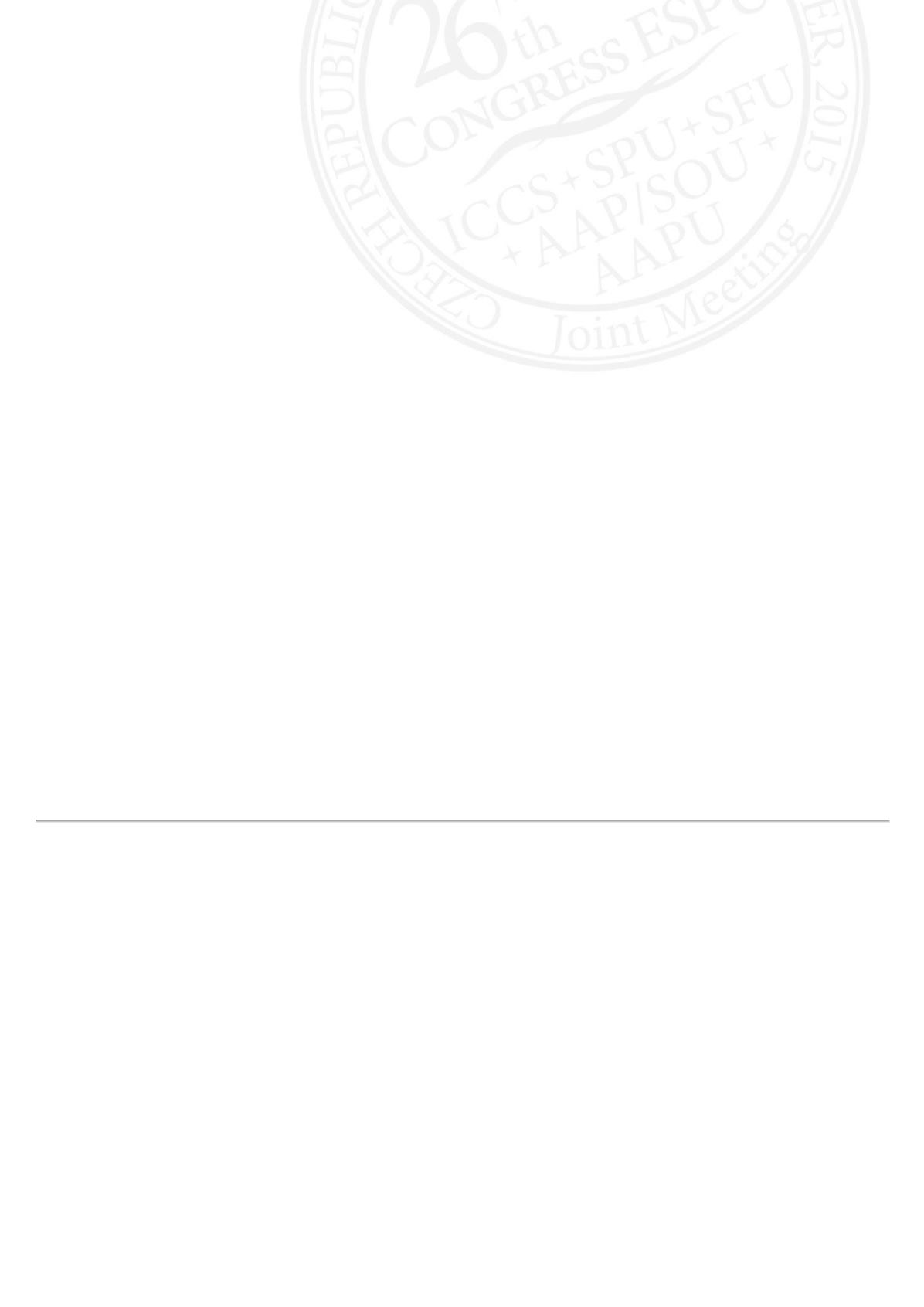

09:00 - 09:03
S4-8
(PP)
TREATMENT OF URETERAL OBSTRUCTION AFTER ENDOSCOPIC INJECTION IN
VESICOURETERAL REFLUX
Rashit BAYBIKOV
1
, Vladimir SIZONOV
2
, Sergey BONDARENKO
3
, Boris DOLGOV
4
, Vitali DUBROV
5
, Ilia KAGANTSOV
6
,
Alexandr PIROGOV
7
, Vadim SHKLYAR
2
and Dmitry SCEDROV
2
1) Children's Republican Clinical Hospital, Paediatric Urology, Kazan, RUSSIAN FEDERATION - 2) Regional Children's
Hospital, Paediatric Urology, Rostov On Don, RUSSIAN FEDERATION - 3) Regional Hospital 7, Paediatric Urology,
Volgograd, RUSSIAN FEDERATION - 4) Hospital im.S.R.Mirotvortseva, Paediatric Urology, Saratov, RUSSIAN
FEDERATION - 5) 2nd CHILDREN'S HOSPITAL, Paediatric Urology, Minsk, BELARUS - 6) Republic Children's Hospital,
Paeditric Urology, Syktyvkar, RUSSIAN FEDERATION - 7) Regional Children's Hospital, Paeditric Urology, Astrakhan,
RUSSIAN FEDERATION
PURPOSE
We retrospectively reviewed cases of ureteral obstruction in patients with vesicoureteral reflux who had
undergone endoscopic injections with different bulking agents in Russian and Belarusian centers.
MATERIAL AND METHODS
In total 3782 (4898 ureters) patients with a mean age of 49.5±36.4 months and male to female ratio of 1:2.2 were
included in the study. Four different injection materials were used; polyacrylamide gel in 2134, collagen in 1424,
dextranomer/hyaluronic acid in 578 and polyacrylate polyalchohol copolymer in 762 ureters. The patients were followed-
up by ultrasonography the next day, in a month and every 3 months during the year and voiding cystouretrography in
3 months.
RESULTS
A total 33 (0.7%) cases of ureteral obstructions were detected. Acute obstruction was developed in 12 patients within
24 hours after injection. Manifestations of acute obstruction included pain and obstructive anuria in one patient with
solitary kidney. Late obstruction (more then 6 months after injection) was identified in 21 ureters. Following treatments
were used: stent insertion in 24 ureters, antibiotic prophylaxis in 2, percutaneous nephrostomy with subsequent
reimplantation in 2 and reimplantation in 3 cases. One patient underwent endoscopic bulge incision. In stenting group
hydroureteronephrosis was relieved in 5 from 6 ureters with acute obstruction, but none with late obstruction. A perfect
outcome was discovered in one ureter with antibiotic prophylaxis and after endoscopic bulge incision. Twenty ureters
with failure of stenting and antibiotic prophylaxis were reimplanted.
CONCLUSIONS
The ureteral obstraction after endoscopic treatment is rare. Ureteral stenting is unsuccessful in cases of late obstruction.












